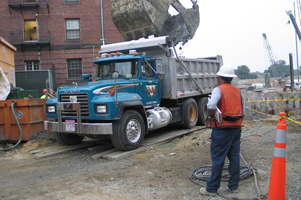





Environmental Advantages
The addition of Portland cement appears to be the major difference between American and European rammed earth practice: American building codes generally require the addition of Portland cement, while European builders frequently leave it out altogether. From an environmental standpoint, reducing or eliminating Portland cement is advantageous because it lowers the energy embodied in the final product. Research indicates that the embodied energy of stabilized rammed earth construction amounts to .80 MJ/M3, as opposed to .94 MJ/M3 for concrete block, and 1.3 MJ/M3 for site cast concrete (Chaturvedi and Ochsendorf 2004). Using soils directly from the site represents an environmental advantage for the same reason. Over seven percent of global CO2 emissions come from the production of cement, and concrete represents nearly one half of the 136 million tons of construction waste generated each year in the United States. (United States Green Building Council 2005) It was evident that a variety of methods of building with rammed earth are in place in various regions of the world. Some add Portland cement; others omit it entirely. Virtually all of those interviewed claimed that building with earth is a forgiving process tolerant of many different approaches, allowing the use of a wide range of soil types and fabrication strategies, especially when conservative design guidelines (e.g. width to height ratios) are followed.